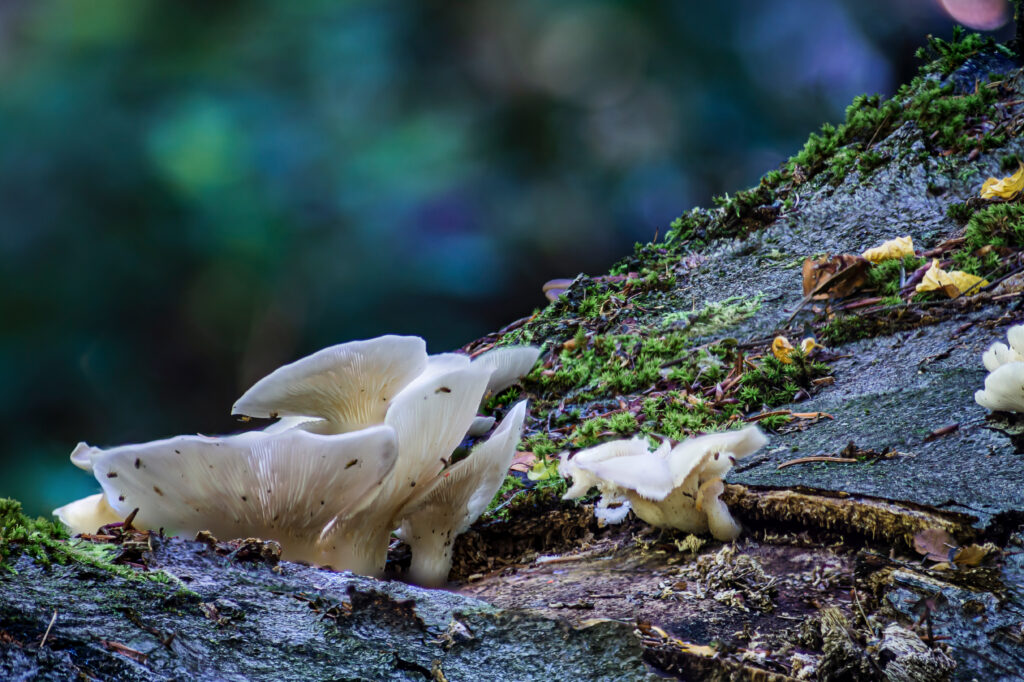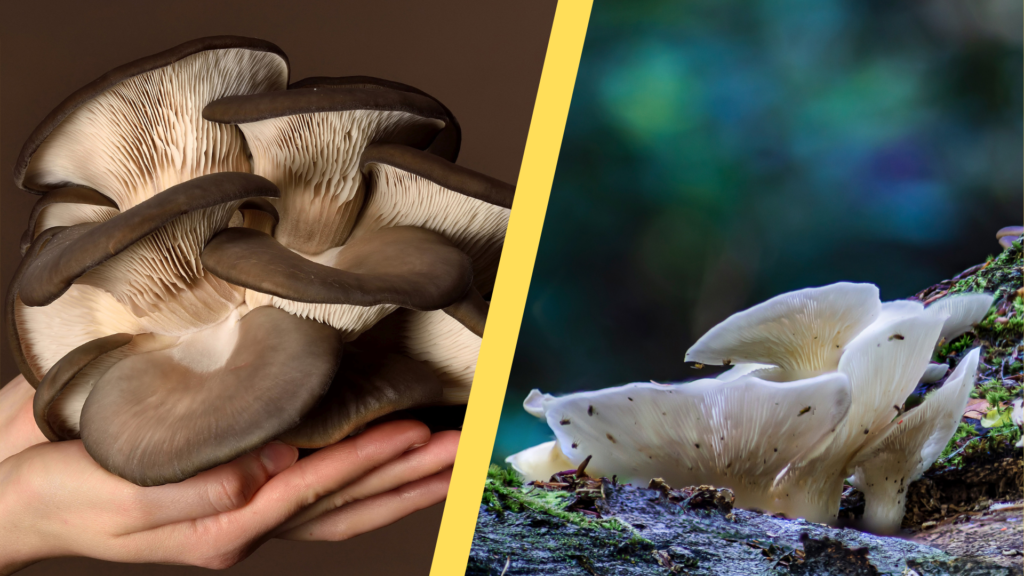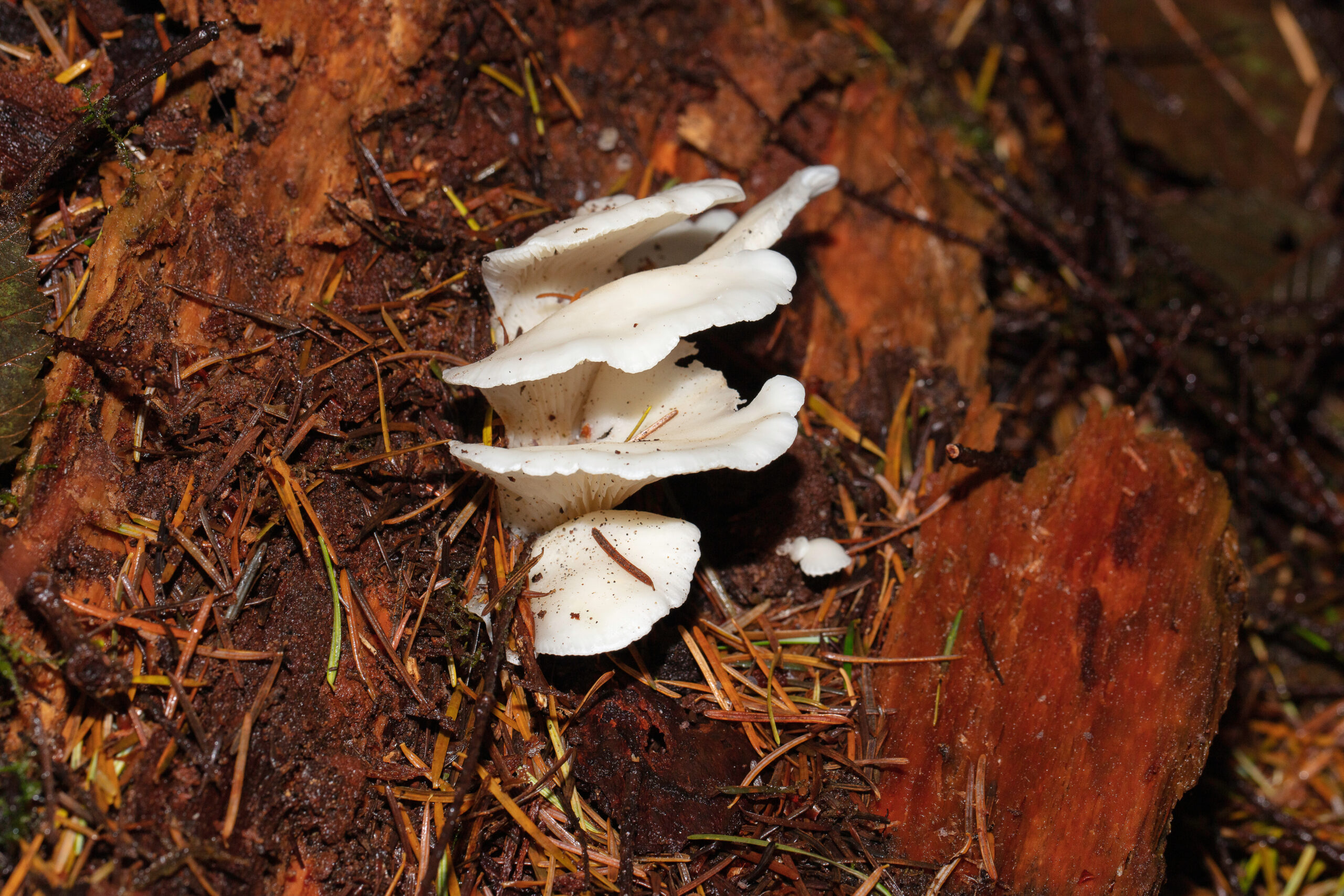Some of the links on this page are affiliate links, which means that Buzzy Kitchen earns commission from purchases made – at absolutely no extra cost to you. Thank you so much for supporting Buzzy Kitchen!
They are a rather beautiful looking fungus, usually tones of white to pale yellow, and they grow in similar places to many other types of mushrooms – forests and woodlands. Angel’s wings mushrooms are nowhere near as angelic as the name might suggest, however. And if you’re looking for an answer to the question: Are angel’s wings mushrooms edible?, you’re in for a rather negative answer.
Although once considered to be edible, there are more than a few reasons why you shouldn’t pick and eat this woodland fungus.
Let’s take a deep dive into the fungus world, shall we?
What Are Angel’s Wings Mushrooms?
Angel’s wings mushrooms are also known by their proper name: Pleurocybella porrigens.
They belong to a family of mushrooms known as Marasmiaceae, which is also home to the shiitake mushroom. The family is a pretty massive one, though: there are reported to be more than 1500 different species.
Are Angel’s Wings Mushrooms Edible?
Up until fairly recently, angel’s wings mushrooms were considered to be edible, but this is no longer the case. And, because the cases of angel’s wings mushroom poisonings are relatively new, further investigations are necessary before this mushroom toxicity is fully understood.
One thing does seem to be clear, however:
Angel’s wings mushrooms can be deadly for those already suffering with kidney or liver problems.

Can You Eat Angel’s Wings Mushrooms?
It is definitely not recommended to eat angel’s wings mushrooms, because they are harmful to some* humans and animals.
If you have existing medical conditions that involve the kidney and/or liver, you definitely should not eat angel’s wings mushrooms. They seem to be particularly deadly for people with certain medical afflictions, and primarily those that affect the liver and kidneys.
The properties that make angel’s wings mushrooms potentially deadly to some people (and not others) are not fully understood, and it was only in the early part of the 2010s that these mushrooms were first taken off the ‘edible’ list of mushrooms.
*I have indicated “some” humans, but angel’s wings mushrooms should be considered dangerous to ALL people, just to be on the safe side.
What Do Angel’s Wings Mushrooms Look Like?
Angel’s wings mushrooms are usually white or pale yellow in shade, and they almost look like a flower at first glance, with large, wispy petals. The wispy petals are actually mushrooms caps, however.
And rather than being attached to a green stem, growing from the ground, the caps are attached to a bare and often short or non-existent white stipe (or stem), growing out of conifer tree stumps or similar woodland spots.
How to Identify Angel’s Wings Mushrooms
Angel’s wings mushrooms are quite distinguishable, which makes them relatively easy to set apart from other mushroom varieties. However, they can, at times, look similar to oyster mushrooms, particularly pearl oyster mushrooms in their early forms, and golden oyster mushrooms in their slightly later form. (Albeit a very pale version of golden.)
Angel’s wings mushrooms start out a very pale white, almost ghostly shade. As they age, they slowly turn a more pale yellow colour, although this is barely noticeable in some cases.
The stem of angel’s wings mushrooms, also known as the stipe, is usually shorter than oyster mushrooms and other types. In some cases, this is barely there at all.

Where Do Angel’s Wings Mushrooms Grow?
You will find angel’s wings mushrooms growing in the Northern parts of England, Cumbria, and a few spots in the Scottish Highlands, but this type of potentially deadly mushroom is actually, thankfully, quite rare.
Angel’s wings mushrooms prefer forest and woodlands of conifer over other types of trees. You will more likely find this type growing on fallen logs and branches, on the stumps of fallen trees, and in similar spots.
It is unlikely that you will find this mushroom growing on the forest floor. If it is growing on the forest floor, it is likely that there is a stump or log of wood hidden beneath the forest substrate, that the mushrooms are growing from.
Angel’s Wings Mushrooms vs Oyster Mushrooms: What’s the Difference?
Angel’s wings mushrooms and oyster mushrooms are very similar, but they do have certain traits that set them apart. You should look out for these traits when attempting to identify mushrooms out in the wild.
As always, if you aren’t sure what the mushroom is, do not put it in your mouth!
It is better to be safe than sorry, and there are some pretty nasty mushrooms growing in forests, woodlands, and elsewhere, in the UK.

One main difference between angel’s wings mushrooms and oyster mushrooms is that the latter (oyster mushrooms) are thicker and meatier. Angel’s wings, as the name might suggest, are more delicate, thinner, and less fleshy.
Oyster mushrooms tend to have a slightly longer stem (stipe) than angel’s wings mushrooms, so you should keep an eye out for that, too.
What Are the Symptoms of Angel’s Wings Mushroom Poisoning?
Angel’s wings mushroom poisoning is not yet fully understood. Experts do not understand what the mushroom contains to make it so deadly to some people and not others.
For years, this type of mushroom has been a delicacy for some places and cultures. To this day, people cook and eat angel’s wings mushrooms without any problems.
However, there have been clusters of cases where angel’s wings mushrooms have proved harmful to human health. In some cases, the mushrooms have even been deadly.
In the most prominent angel’s wings mushroom poisoning cases, the location was Japan, and the patients largely had pre-existing medical conditions that affected either the kidneys or the liver. In these cases, the death was classed as encephalopathy, which isn’t one single condition or disease, but instead refers to a cluster of symptoms that affect the brain.
Symptoms of encephalopathy can include delirium, drowsiness, selective attention, headaches, seizures, tremors, problems with movement, rapid eye movement, restlessness, insomnia, paranoid delusions, hallucinations, problems with memory loss, and more.
In very severe cases, encephalopathy can cause death.
It should be noted that there are different ‘kinds’ of encephalopathy, each with differing levels of severity and differing clusters of symptoms.
Angel’s Wings Mushroom Deaths
There have been deaths associated with angel’s wings mushrooms. In the cases previously mentioned, in Japan, 59 people became unwell (average age: 70; most with pre-existing liver conditions). Out of those 59 people, 17 of them sadly died as a result of the poisoning.

Angel’s Wings Mushroom Lookalikes
Angel’s wings mushrooms are quite distinctive to look at, which makes them relatively easy to identify out in the wild. Not only that, they seem to grow only in small patches in Cumbria, Scotland, and the north of England, so it is unlikely that you will encounter angel’s wings mushrooms out and about, unless you are in those places.
Some oyster mushrooms can look very similar to angel’s wings mushrooms, particularly pearl oyster mushrooms and other, pale-coloured varieties.
Words of Wisdom
If you are not sure what kind of mushroom you are about to eat, do not eat it. You must be 100% sure that you aren’t eating a toxic or potentially deadly mushroom, especially if you have foraged for wild mushrooms.
Useful Resources & Sources:
- Angel’s Wings | The Wildlife Trusts
- Angel’s Wings | Geoff Dann
